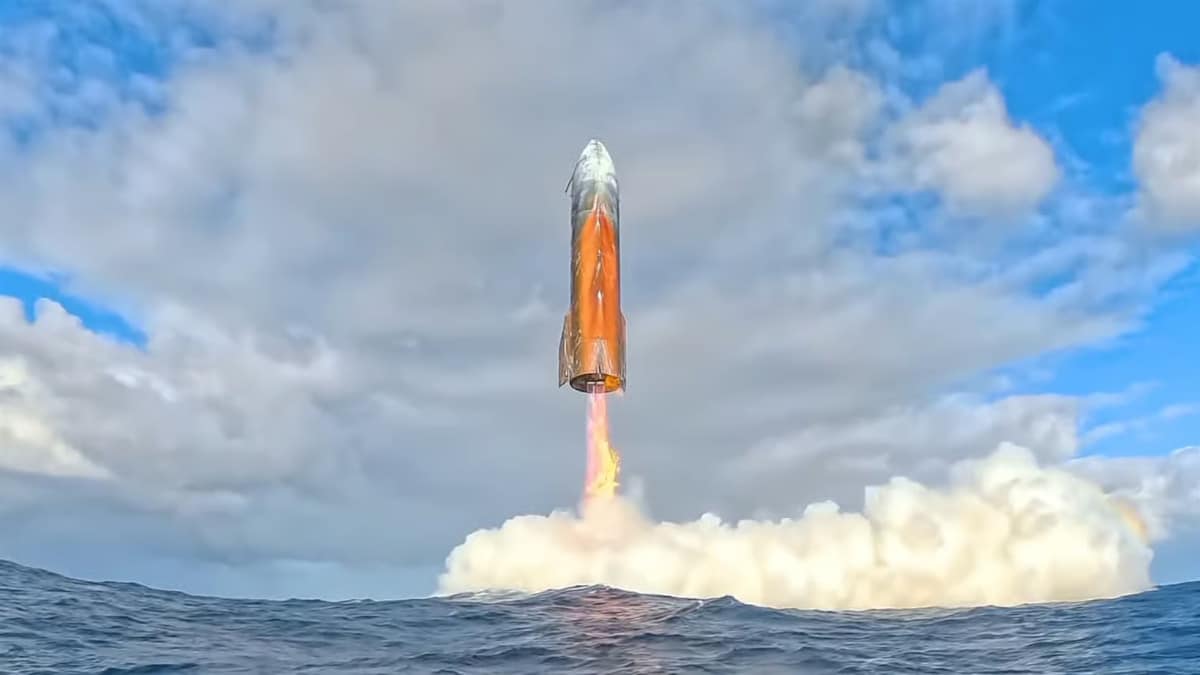SpaceX just dropped a two-minute highlight reel of its tenth Starship test flight — and the footage is nothing short of spectacular.
After a rocky start with several failed attempts, the August 26 launch marked a major win for the Starship program. The giant rocket lifted off without a hitch, drawing a collective sigh of relief from everyone watching. Now, with the eleventh flight already on the calendar — less than two weeks away — excitement is building again.
Starship is SpaceX’s super-heavy launch system, currently in testing as part of a long-term plan to ferry astronauts to the Moon for NASA’s Artemis III mission in 2027. It’s also set to replace the Falcon 9 for launching the ever-growing Starlink satellite network.
To celebrate the success, SpaceX has released a stunning two-minute video showing off the test flight’s most epic moments.
Watch the tenth Starship launch. © SpaceX
Starship version 2 sticks the landing — and version 3 is on the way
The video begins with dramatic drone footage of the rocket on the launchpad. Then comes ignition — a close-up of the Super Heavy booster bursting to life. After separation, the booster executes a flawless splashdown in the Gulf of Mexico. Starship continues on a suborbital path, deploying eight simulated Starlink payloads, and giving us a rare peek at its internal mechanisms. Finally, it completes its own controlled landing in the Indian Ocean.
Next up is launch number eleven, set for October 13. It will be the last outing for version 2, and SpaceX will push the vehicle further than ever — stress-testing the upper stage heat shield and trying out a reusable booster again.
This flight will reuse the Super Heavy from mission eight — the one caught mid-air by the jaws of the Mechazilla tower.
What’s next? Flight 13 will feature Starship version 3, expected sometime next year. And Elon Musk has already teased version 4 — a 142-meter monster (up from 124.4 meters for version 3).
The future of spaceflight? Getting bigger, faster — and a lot more cinematic.
![]()
Edward Back
Journalist
My passion for programming began with my very first computer, an Amstrad CPC 6128. I started coding in Basic, then moved on to Turbo Pascal on a 286, eventually exploring more modern languages including web development. I’m also deeply interested in science, which led me to attend a math-focused preparatory program. Later, I studied psychology with a focus on the cognitive aspects of artificial intelligence.


